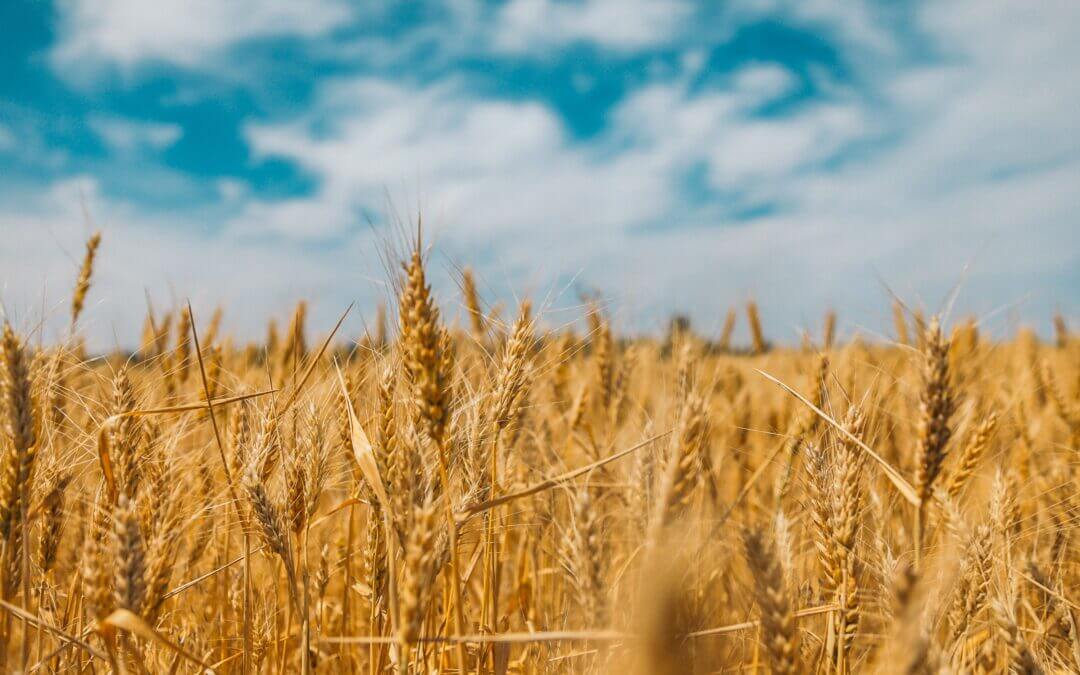Summary
Today we invite you to the entry about gluten, which was created at the request of one of our
readers. We will explain what gluten is, where it occurs, and you will find answers to such questions
as the forms of gluten intolerance, what should be avoided in the diet, what can we eat safely and is a
gluten-free diet harmful for healthy people?
What is gluten?
When we asked you what you would like to read, you told us about gluten intolerance, so fulfilling
your request, we come back with an answer.
Let’s start with what gluten is. It is a protein complex that is insoluble in water and sodium hydroxide
solution. It occurs in wheat (in the form of proteins, gliadins and glutenin), rye (secalin), barley
(hordein), oats (avenin) and their derivatives, i.e. in mixed varieties, such as triticale. Due to its
properties, gluten is very widely used in the confectionery and bakery industry – it ensures the right
consistency of baked goods, it is a good flavor carrier and reduces the fermentation time. Gluten is
very well tolerated by most people, but you are increasingly hearing that someone is on a gluten-free
diet. Why is this happening? This protein is quite resistant to digestion in the stomach, it causes,
among others, overexpression of other proteins – zonulins, which cause disturbances in tight
intercellular connections, which increases the permeability of the small intestine membrane and
disturbs intestinal homeostasis (balance).
Gluten related medical conditions
There are three main diseases related to gluten.
The first one is celiac disease, it affects about 1% of the population – genetically determined
hypersensitivity to gluten, autoimmune. People with celiac disease have specific genetic changes that
force their immune system to recognize gluten as foreign. As a result, lymphocytes that produce
antibodies are activated, leading to chronic inflammation. This disease is a disorder of digestion and
intestinal absorption, followed by the disappearance of intestinal villi, which affects the absorption of
nutrients from food. The symptoms of celiac disease include diarrhea, gas, constipation, weight loss
or skin changes. It was once believed that this disease affects children, unfortunately this is not true.
It can take a latent, asymptomatic form for a long time and become active in adulthood.
The second is gluten allergy. It affects about 3% of the population. It is also involved in the immune
system, which reacts inappropriately to wheat proteins, including gluten, and produces allergy-
specific antibodies. Even anaphylactic shock can occur and symptoms appear very shortly after
exposure to the allergen. Classic symptoms are similar to those of celiac disease – nausea, vomiting,
diarrhea, hives and runny nose.
The third mentioned by researchers is gluten intolerance, otherwise known as non-celiac gluten
hypersensitivity (NCGH), which affects about 5% of the population. Diagnostic tests do not find
antibodies to celiac disease or allergies, and a gluten-free diet eliminates the symptoms and increases
the patient’s well-being. Initially very denied by scientists because it had no known pathomorphology.
It finally found recognition, but very late, because in 2011 the definition and criteria of the disease were established, although reports and studies on this subject had already appeared in 1970. The
symptoms of NCGH are chronic diarrhea, abdominal pain, fatigue and irritability. Currently, it is
diagnosed at all ages, but most cases are recorded between the ages of 40 and 50. We recommend
the entire article on the National Science Center, Mr. Kamil K. Hozyasz “Non-celiac gluten
hypersensitivity (NCGH) – a rediscovered disease”.

Diet with gluten intolerance
So what to eat if you are a gluten intolerant when almost all grains ‘fall off’? You should use naturally
gluten-free products, such as corn, buckwheat, millet, rice, amaranth, sorghum, tapioca, cassava,
legumes, as well as potatoes and sweet potatoes. There are also products where gluten has been
technologically eliminated. Look for the markings on the labels. Vegetables, fruits, meat, fish, milk
and eggs are also gluten-free. In addition, in the age of the Internet, there are many gluten-free
culinary blogs, for example http://quinoaraz.blogspot.com/, where you will find many delicious
recipes and the lack of gluten will not be so painful.
Supplementation with a gluten-free diet. Diagnostics of gluten related diseases
Should we supplement vitamins and minerals on a gluten-free diet? If our diet is very well balanced,
we should provide all vitamins and minerals from food, but this is rarely the case. People with gluten
intolerance have low concentrations of fat-soluble vitamins A and E, as well as zinc, iron and folic acid.
It is also desirable to enrich the diet with vitamin C, B vitamins and magnesium. If you are looking for
natural vitamin C, we recommend our supplements: Vitamin C 1000 mg from wild rose and Echimunn
C from purple coneflower.
What should I do if I suspect I am gluten intolerant? You should go to an internist who will guide you
further, e.g. he will refer you to a gastroenterologist or to blood tests for celiac disease. If celiac
disease is ruled out, diagnosis of gluten allergy is performed, which is also based on blood tests. In
the event that it is also excluded, try the elimination diet. Set aside products containing gluten and
then re-enter them. If the symptoms first resolve and then return, it can be concluded that we suffer
from non-celiac gluten sensitivity, and your doctor will guide you in everything.
At the end of today’s post, we will ask one more important question. Is a diet that eliminates gluten
from the diet healthy for people who do not suffer from gluten intolerance? Opinions are divided
here. However, for 24 years, a group of scientists at Columbia University Medical Center in New York
conducted a study of more than 110,000 people who exclude gluten from their diets and are not
intolerant, and concluded that this diet may contribute to cardiovascular disease due to lower
consumption of whole grains, as a consequence, there was less fiber in their diets.
AUTHOR: mgr inż. Renata Kowalczyk
Bibliography
Nadwrażliwość na gluten ? fakty i kontrowersje, M. Stępień, P. Bogdański, Forum Zaburzeń
Metabolicznych 2013, tom 4, nr 4, 183-191
( https://journals.viamedica.pl/forum_zaburzen_metabolicznych/article/view/36960/26444 )
Gluten i choroby wnikające z jego nietolerancji, E. Bubis, I. Przetaczek-Różnowska, Kosmos, 2016,
(311); 293-302 ( https://kosmos.ptpk.org/index.php/Kosmos/article/view/1615/1593 )
Nieceliakalna nadwrażliwość na gluten (NCNG) ? choroba ponownie odkryta, K. K. Hozyasz, Family
Medicine & Primary Care, 2016; 18, 1: 79-83?
?Long term gluten consumption in adults without celiac disease and risk of coronary heart disease:
prospective cohort study?, B. Lebwohl i in. BMJ 2017; 357
( https://www.bmj.com/content/357/bmj.j1892 )
https://www.medistore.com.pl/zdrowie/gluten
https://zdrowegeny.pl/poradnik/alergia-na-gluten
https://www.poradnikzdrowie.pl/zdrowie/uklad-pokarmowy/nietolerancja-glutenu-objawy-badania-
dieta-aa-kpQv-4hXZ-AYs6.html
https://www.poradnikzdrowie.pl/diety-i-zywienie/diety/dieta-bezglutenowa-zasady-produkty-
zakazane-i-dozwolone-aa-N3Nk-BULZ-caT5.html




